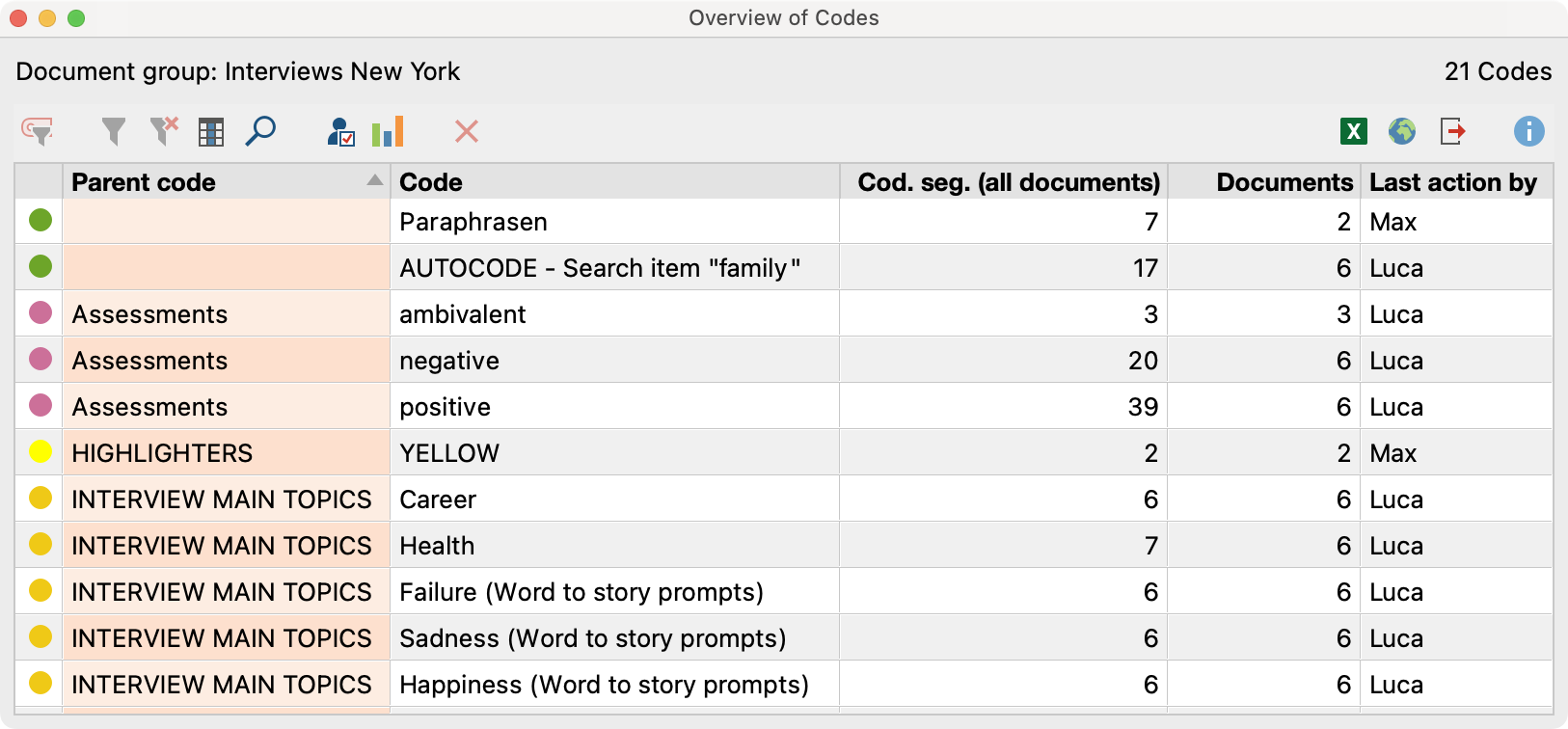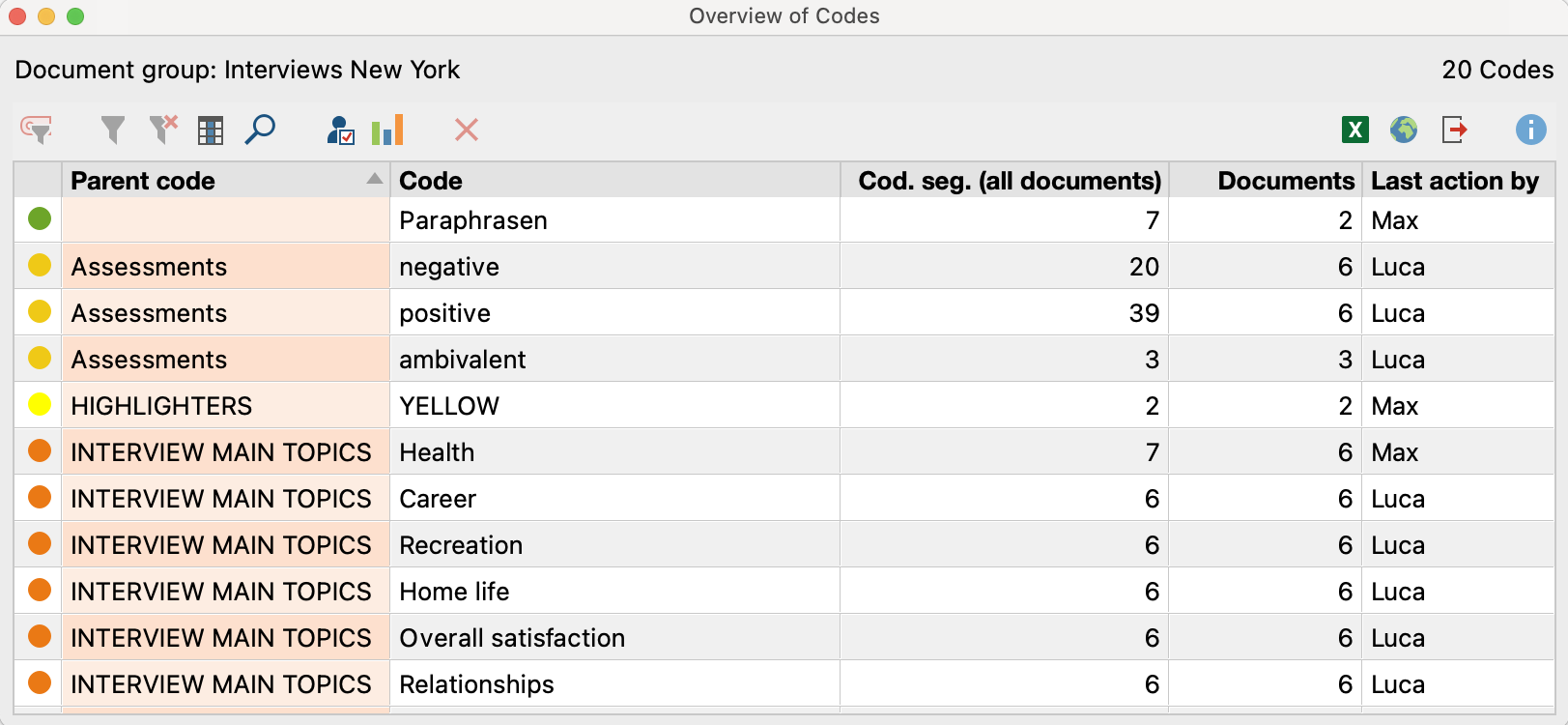It might be of interest to take a look at how many times each code was assigned to individual, multiple, or all documents. Alternatively to the visual display of the Code Matrix Browser you can also open the Overview of Codes, which you can find in several places in the program:
- In the Reports tab,
- In the context menu at the root of the “Document System”,
- In the context menu of a document group or document set, or
- In the context menu of an individual document.

A table view of all of the codes that occur in the relevant documents will appear. The table may contain more or fewer lines depending on the place in the program from which it was called up. In the title of the overview, you can see which documents the overview applies to and to how many (different) codes in the document a segment is assigned.

The other columns consist of:
- Code – The name of the code that appears in the “Code System”
- Parent code – Contains the parent code for easy identification of a code. If the “Parent code” column is empty, the code in this row belongs to the top level of the code system.
- Cod. seg. (all documents) – The number of segments in the analyzed documents that have been coded with a particular code or subcode.
- Cod. seg. (activated documents) – Takes only activated documents into account. If this column displays all zeros, then presumably because no documents are activated. Once you activate documents, you can directly observe how the values in this column change.
- % Cod. seg. (all documents) – The percentage of segments that have been coded with the particular code or subcode, in relation to the total number of coded segments in column “Cod. seg. (all documents)”. The sum of the column is 100%.
- % Cod. seg. (activated documents) – As in the “% Cod. seg. (all documents)” column but takes only activated documents into account.
- Documents – Number of documents in which the code or subcode appears.
- Code alias – Alternative name for a code with up to 255 characters, that e.g., may be exported in the Smart Publisher report instead of the code name itself.
Right-clicking a row opens a context menu with various options, you can open the overview tables of Coded Segments or Linked Memos, for example. You can also change the color attribute of a code from this menu.
A toolbar is displayed at the top of the window from which the following special functions can be accessed:
![]() Aggregate on 1st level – Only the codes at the top level of the code system will be displayed. Here, the code frequencies of the subcodes are added, as well as the number of documents in which the code occurs.
Aggregate on 1st level – Only the codes at the top level of the code system will be displayed. Here, the code frequencies of the subcodes are added, as well as the number of documents in which the code occurs.
![]() Statistics – Displays the values of the columns “Cod. seg. (all documents)” and “Cod. seg. (activated documents)” as a frequency table or chart. For more information, see Frequency Tables and Charts for Subcodes
Statistics – Displays the values of the columns “Cod. seg. (all documents)” and “Cod. seg. (activated documents)” as a frequency table or chart. For more information, see Frequency Tables and Charts for Subcodes
